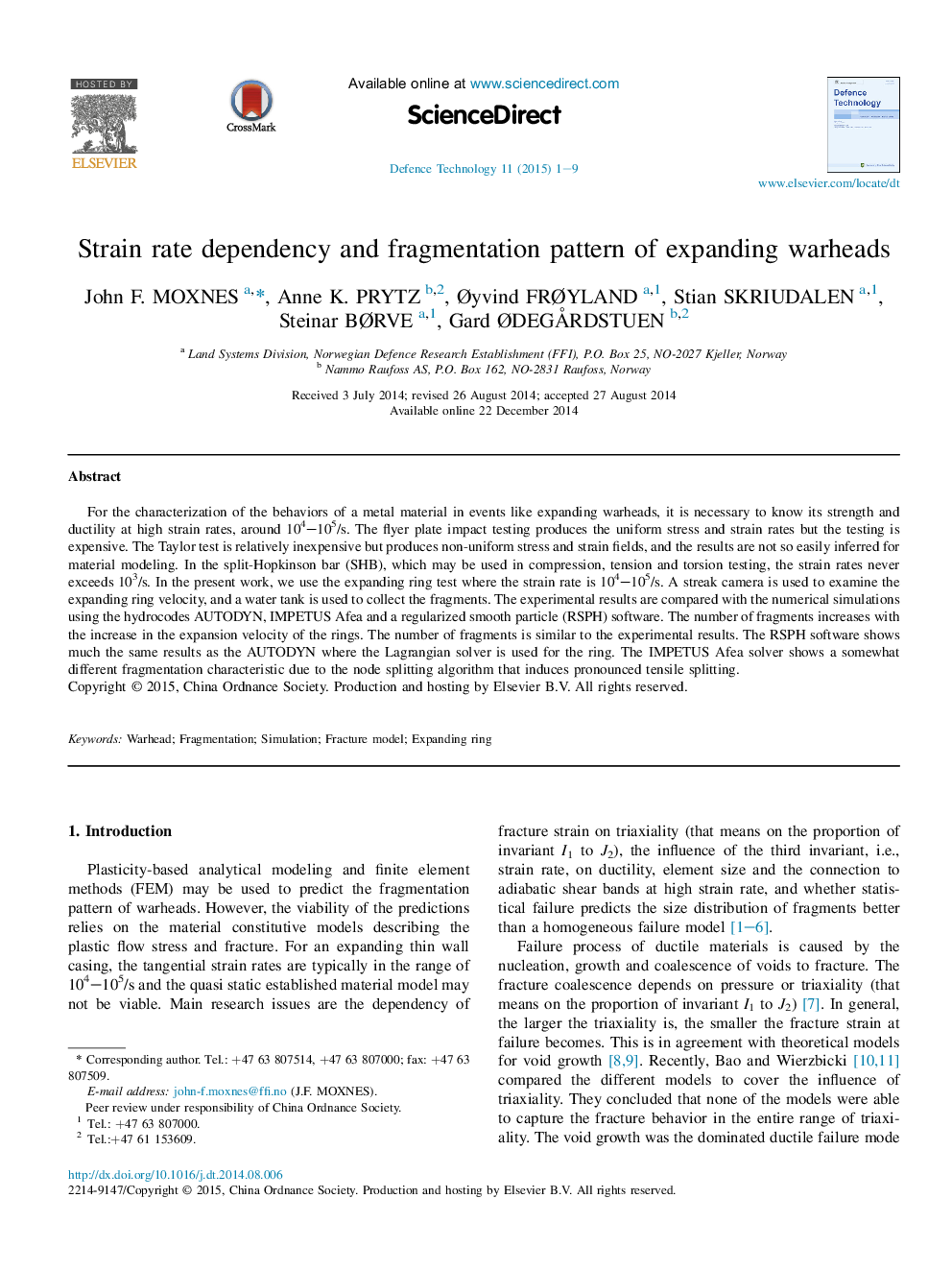| Article ID | Journal | Published Year | Pages | File Type |
|---|---|---|---|---|
| 759777 | Defence Technology | 2015 | 9 Pages |
For the characterization of the behaviors of a metal material in events like expanding warheads, it is necessary to know its strength and ductility at high strain rates, around 104–105/s. The flyer plate impact testing produces the uniform stress and strain rates but the testing is expensive. The Taylor test is relatively inexpensive but produces non-uniform stress and strain fields, and the results are not so easily inferred for material modeling. In the split-Hopkinson bar (SHB), which may be used in compression, tension and torsion testing, the strain rates never exceeds 103/s. In the present work, we use the expanding ring test where the strain rate is 104–105/s. A streak camera is used to examine the expanding ring velocity, and a water tank is used to collect the fragments. The experimental results are compared with the numerical simulations using the hydrocodes AUTODYN, IMPETUS Afea and a regularized smooth particle (RSPH) software. The number of fragments increases with the increase in the expansion velocity of the rings. The number of fragments is similar to the experimental results. The RSPH software shows much the same results as the AUTODYN where the Lagrangian solver is used for the ring. The IMPETUS Afea solver shows a somewhat different fragmentation characteristic due to the node splitting algorithm that induces pronounced tensile splitting.
